Family : Pterophoridae

Text © Prof. Santi Longo

English translation by Mario Beltramini
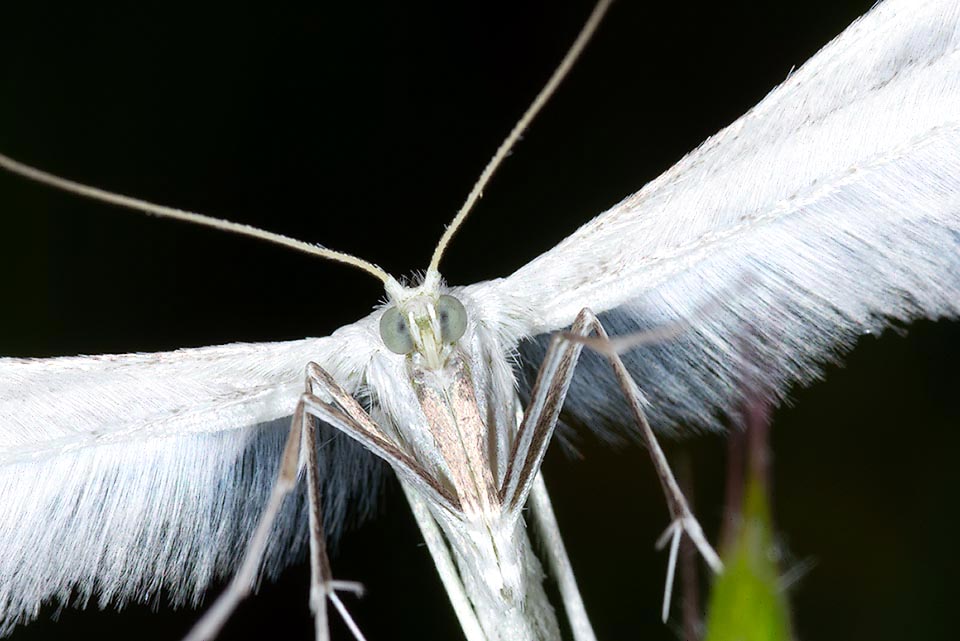
The White plume moth (Pterophorus pentadactyla) is present in almost all the western Pale-Arctic and in the Middle East up to Iran and to Africa © Salvatore Infanti
The White plume moth Pterophorus pentadactyla (Linnaeus 1758) is a Lepidopteran belonging to the family
Pterophoridae, subfamily Pterophorinae, that groups together the White plume moths, thus known in English because of their wings rich in long hairs and divided in lobes.
The name of the genus Pterophorus, created by Schäffer, 1766, comes from the Greek “pteron”, wing, feather and “phoreo” to carry, and recalls the feathery look of the wings.
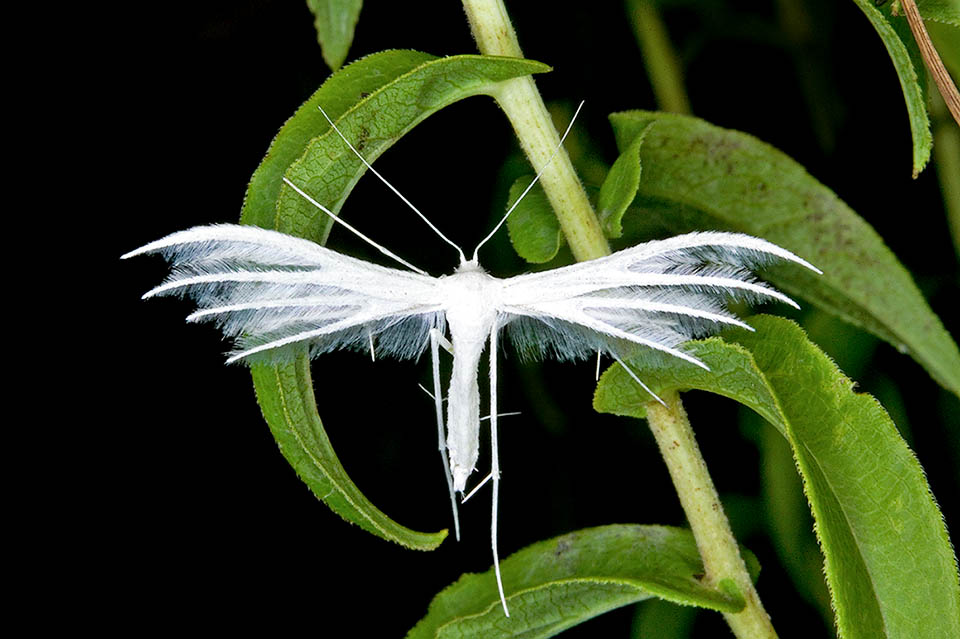
Its wingspan is 28-25 mm. The forelimbs are divided into 2 lobes and the hindlimbs have 3 thinner lobes with very long fringes. The legs have unusual camouflage spurs © Giuseppe Mazza
The specific pentadactyla, with five fingers in Greek, refers to the five lobes into which the wings are divided.
Zoogeography
Present in almost all the western Palearctic region, but the Iberian Peninsula, and in the Middle East up to Iran, Africa.
Ecology-Habitat
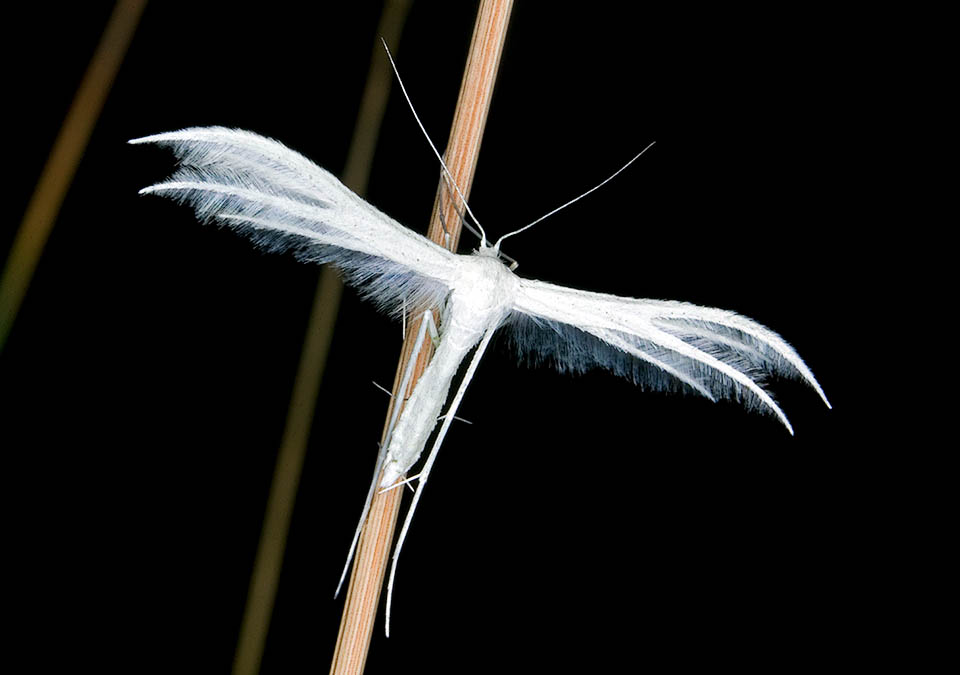
When resting keeps the wing lobes close together and perpendicular to the body axis for escaping the predators’ attention © Giuseppe Mazza
Pterophorus pentadactyla lives in humid environments where there are present herbs or shrubs, spontaneous as well as cultivated, from the altitude of 1000 m where grow the Convolvulaceae. Often the adults, attracted by the lights, reach the urban centres and fly around the street lights and at times penetrate into buildings.
The larvae are oligophagous and live at the expense of Calystegia sepium and Convolvulus arvense. In Nigeria it is a species harmful to the Sweet potato Ipomoea batatas seriously defoliated mainly by the mature larvae. In Europe, leaf erosions are reported also on Rose, Clover and Blackthorn.
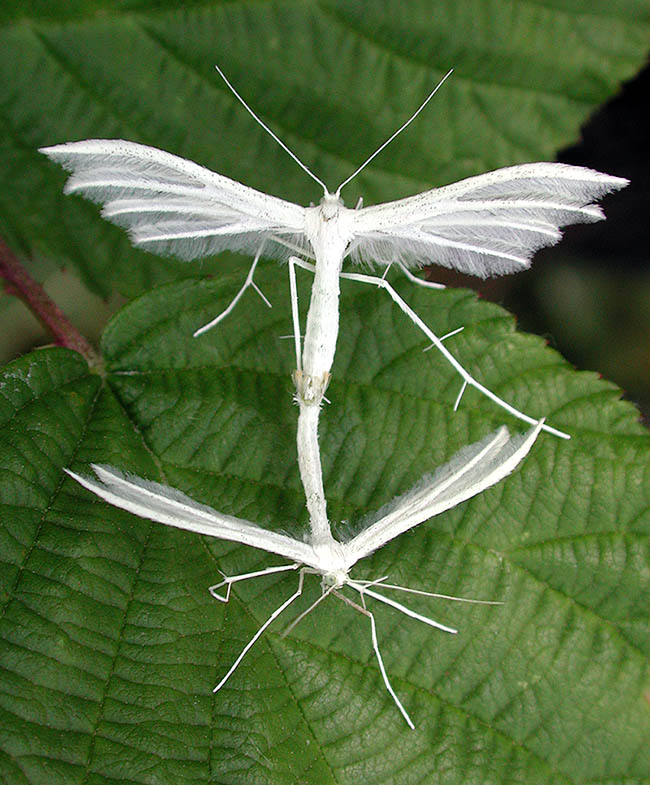
A mating. Pterophorus pentadactyla has only one annual generation © Thorsten Stegmann
Morphophysiology
The adults have the body of pure white colour as well as the long fringed wings and characteristically divided in five lobes.
The head is equipped with small licking-sucking mouthparts characterized by a long spiritromba, or proboscis.
Thorax and abdomen are thin. The wingspan varies from 28 to 35 mm.
The forewings, at about one third of their length, divide in two lobes. On the lower pagina of both sexes are present glandular scales that produce aphrodisiac and sexual pheromones.
The hind wings are divided into three lobes,thinner and with very long fringes.
During the stops the adult keeps the lobes of the wings close together and perpendicular to the body axis. The hind legs placed against the abdomen contribute to giving the insect the appearance of a blade of dry grass and to escape the predatory birds’ attention.
The larvae have a pale green coloured body with a dark dorsal line and often also lateral white streaks. On the dorsal part of the segments of the thorax and of the abdomen stand yellow spots and black tubercles with long white hairs.
The chrysalises have long white hairs. Normally their colour is pale green with black spots; many are greenish white with black dorsal spots.
Ethology-Reproductive Biology
The adults of the unique annual generation flutter from the month of May and are active until September.
After mating, the females of the White plume moth oviposit on the food plants and the larvae, until late autumn, gnaw the leaves of the host plants where they will spend the coldest period keeping motionless.
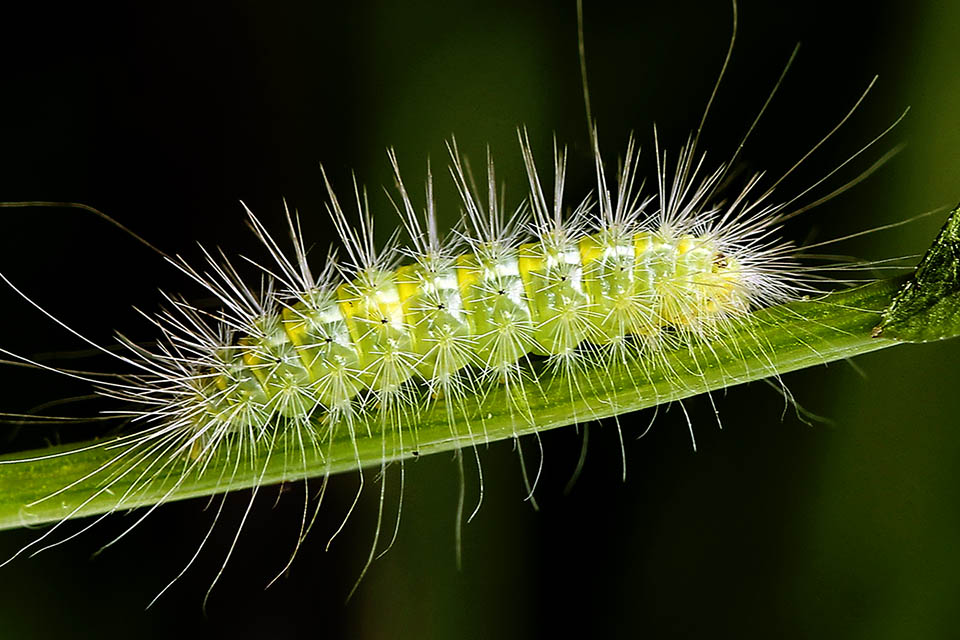
The larvae are oligophagous. They grow usually at the expense of Convolvulaceae and spend the winter motionless on the leaves completing development in spring © Andrey Ponomarev
In late winter, as temperatures increase, the larvae that are able to overcome the cold season, resume their activity and complete their development during the spring.
Synonyms
Aciptilia pentadactyla Linnaeus, 1758; Pterophorus pentadactylus (Linnaeus, 1758); Phalaena tridactyla Scopoli, 1763; Alucita pentadactyla Denis & Schiffermuller, 1775; Alucita pentadactyla Hubner, 1805; Aciptilia pentadattila var sulfurea Staudinger,1880.
→ For general notions about the Lepidoptera please click here.
→ To appreciate the biodiversity within the BUTTERFLIES please click here.
